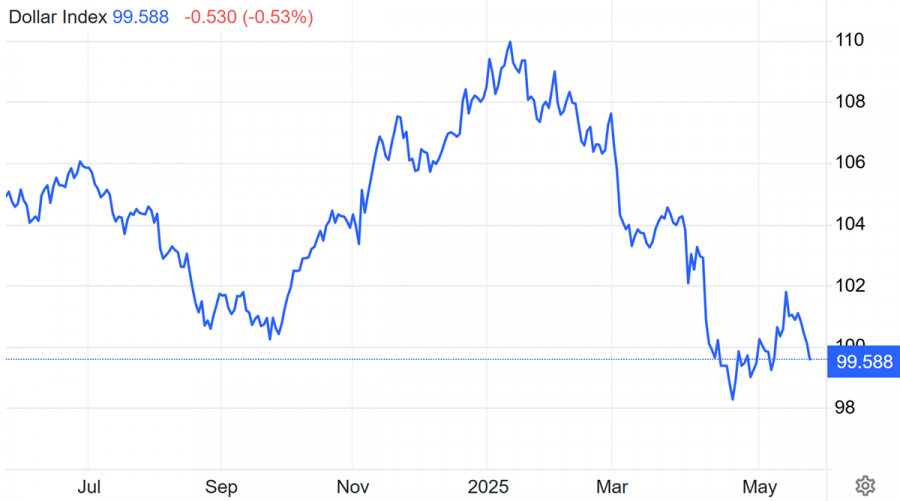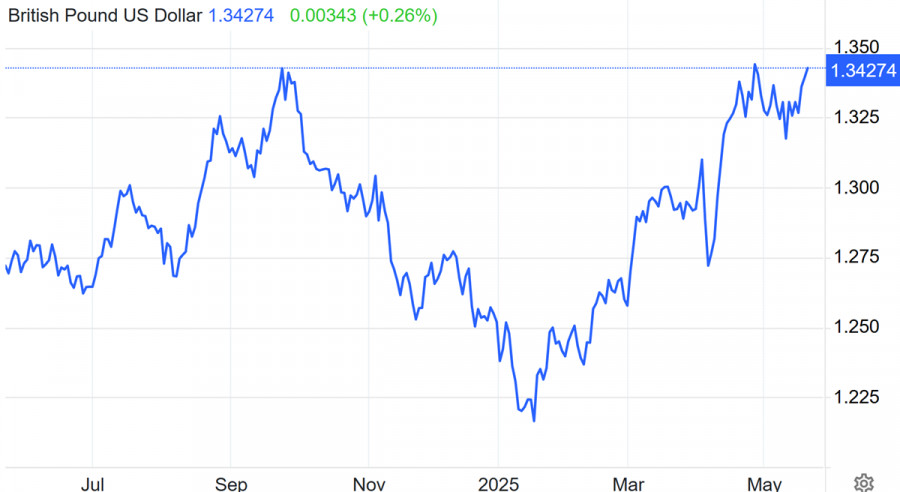A new chapter is beginning on the currency market, and the British pound appears to be writing it. April's inflation data came as a real shock to investors: the UK's headline Consumer Price Index (CPI) surged by 1.2% month-over-month—the largest increase since April 2022.
Year-over-year inflation accelerated sharply from 2.6% in March to 3.5%. Core inflation, excluding volatile components like food and energy, rose to 3.8%—a 13-month high.
This represents more than mere numbers; it's a clear signal to the market that inflationary pressure is returning systematically in the UK, not just in sectors vulnerable to short-term fluctuations.
Housing, utilities, recreation, and culture were the main contributors to rising prices—sectors that are not easily influenced by interest rate adjustments. This makes the situation particularly challenging for the Bank of England.
Previously, the central bank began a cautious easing cycle as inflation declined, reaching a low of 1.7% in September 2024. At the time, rate cuts seemed justified.
Now, however, continuing to ease policy could be a risky move. As ING currency analysts point out, "any further monetary easing would require far stronger arguments from the Bank of England than those available a month ago."
Market expectations are shifting: the "soft policy" scenario gives way to one focused on curbing inflationary pressure.
Given this context, the pound's strengthening is not surprising; this development is logical. The GBP/USD pair hit a three-year high of 1.3468, fueled by UK data and the external environment.
The US dollar is weakening, which supports alternative currencies, especially those whose central banks have no reason to cut rates in the near future.
Troubling remarks from the Federal Reserve are compounding the dollar's weakness. Fed officials are increasingly voicing concerns about the United States' fiscal stability, rising debt, and the consequences of trade restrictions.
Sensing this uncertainty, investors are moving capital to other jurisdictions. The euro and the pound benefit, particularly amid a possible re-evaluation of the BoE's policy path.
Analysts also highlight the weakening confidence in the dollar, with growing market chatter about stagflation risks in the US. Simultaneously, an upcoming G7 finance ministers' meeting may touch on currency wars.
Unofficial reports suggest the US may pressure its trade partners to strengthen their currencies. This would only exacerbate the current dollar weakness.
The financial market is entering a phase of rethinking. Inflation, its persistence, and how central banks respond are now in focus. The BoE faces a choice: continue easing or acknowledge that price pressure warrants a pause.
For now, the market is voting for the latter. And that vote favors the pound sterling.
After a sharp rally, the pound sterling has cooled slightly. Cautious remarks from UK officials triggered the correction.
Chancellor Rachel Reeves publicly expressed disappointment over the "overheated" inflation figures, which the market interpreted as a signal of a more cautious stance on monetary strategy.
Meanwhile, BoE Chief Economist Huw Pill stated that structural changes in pricing and wage growth mechanisms require extreme caution when cutting rates. Investors took this as a signal that the central bank is in no rush to ease policy despite growing inflationary pressure.
Nevertheless, the pound retains strong fundamental support. Despite the intraday pullback, the GBP/USD pair remains above the key 1.3400 level, suggesting continued bullish sentiment toward the pound in the medium term.
The trend remains bullish. All key exponential moving averages (EMAs)—short and long-term—point upward, confirming the uptrend.
The pound holds support at around 1.3400, and the 20-day EMA at 1.3300 serves as a critical support zone that could spark the next upward impulse.
The 14-day Relative Strength Index (RSI) has broken above the 60 level. A sustained move above this threshold would increase the probability of continued growth and could trigger a new bullish wave.
The next major resistance is at 1.3750, the January 2022 high. A breakout above that would pave the way for fresh three-year highs. The pair may consolidate within the 1.3300–1.3470 range before its next surge.
Traders should closely watch the BoE's response to rising inflation risks—any hawkish signals will be quickly priced in favor of the sterling.














